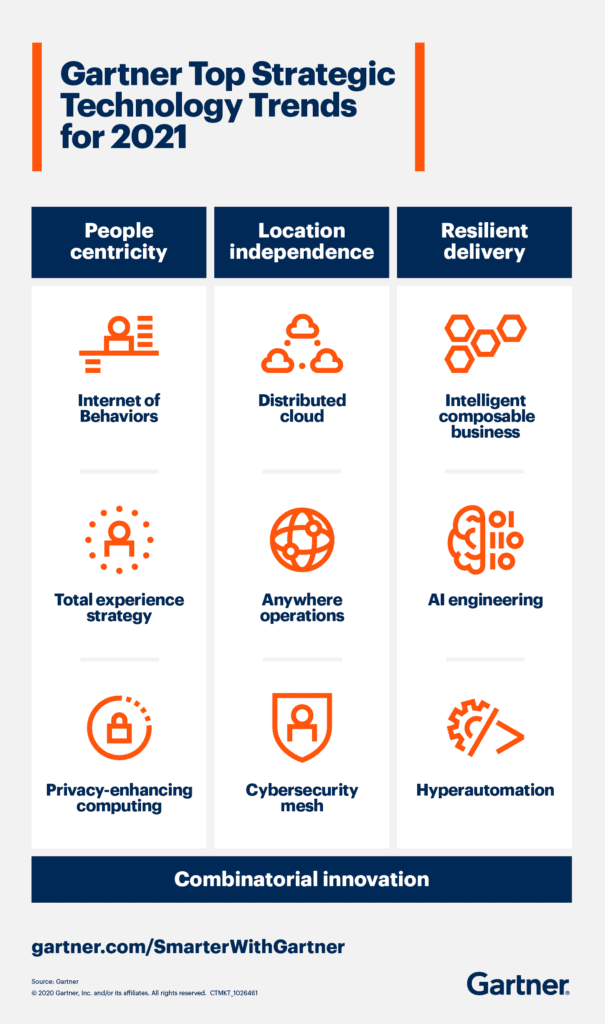
Since its foundation, Xage has worked tirelessly to build a security platform with distributed enforcement – the Xage Security Fabric – that protects all machines and applications from vulnerable legacy systems to IoT devices and cloud apps to create the essential trusted foundation for digital transformation. We are excited that industry experts including Gartner are now recognizing Xage’s approach as a top technology trend.
In a recent article, Gartner cited “cybersecurity mesh” as one of the strategic technology trends for 2021. Their description of “mesh” is strikingly familiar: “Cybersecurity mesh is a distributed architectural approach to scalable, flexible and reliable cybersecurity control […] Cybersecurity mesh essentially allows for the security perimeter to be defined around the identity of a person or thing. It enables a more modular, responsive security approach by centralizing policy orchestration and distributing policy enforcement.”
Gartner’s synopsis essentially describes the foundational characteristics of the Xage Fabric. The Fabric delivers granular, application-level security and access control so that operators can instantly create or revoke access policies for groups or individual devices, applications, and people, enabling secure access and secure collaboration at any location. With a zero trust approach, the Fabric uses identity as the perimeter rather than automatically assuming trust for any entity that gains network-segment access. Simultaneously, all access attempts are tracked with a tamperproof audit-log. Policies (e.g. for access control, credential rotation, or multi-factor authentication) are set centrally but delivered and enforced autonomously in the field using the Fabric. This technology creates, too, a strength in numbers system as additional devices are added to this distributed Fabric. With critical security data and decision-making shared amongst the Fabric nodes, the more nodes added to the Fabric, the harder it becomes to compromise enough nodes simultaneously to break into the system as a whole. In other words, there is no single point of failure for a hacker to attack.
Beyond what Gartner described, the Xage Fabric also enables and controls data sharing across multiple processes, locations and ecosystem participants ensuring that data is trusted and actionable. We’re digitally hashing, signing and encrypting operational data at its source, communicating the resulting security information back to the Fabric. The Fabric then protects and replicates the security information to ensure that the underlying operational data can be published or consumed anywhere as needed with its authenticity, integrity and confidentiality protected by the Fabric itself.
As we look ahead, it’s clear that the future of cybersecurity rests in this very concept: a distributed security architecture that not only protects assets at the source, but enables data sharing to drive digital transformation.
Secure operations in 2021 and beyond will look a whole lot different than they did a few years ago, and it seems that Gartner would agree that the Xage Security Fabric is well on its way in establishing the new gold standard in cybersecurity.










